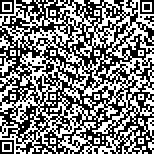| 摘要: |
| 基于2004 年1 月~2009 年12 月月平均Argo(Array for Real-time Geostrophic Oceanography)温盐格点资料, 结合P-vector 方法重构了西北太平洋绝对地转流, 重点分析了西北太平洋环流时空变化特征。结果表明, 基于Argo 资料西北太平洋三维结构特征与以前的研究结果是一致的。与WOA09(World Ocean Atlas 2009)计算的纬向流相比, Argo 资料计算的纬向流要偏大。北赤道逆流(NECC)、北赤道流(NEC)、黑潮再生流(KCC)和黑潮延伸体(KE)都有明显的季节和年际变化。NECC 和NEC 基本上呈现春强秋弱的季节变化特征, KCC 和KE 的季节特征与NECC 和NEC 存在反相关系。NECC 和NEC 表现出周期为1~2 a 的年际信号, KCC 和KE 为非周期性的年际信号。表层NEC 流核所在位置以及NEC南边界位置都有南移的趋势。另外, NEC、KCC 和KE 的流量也呈逐渐增大的趋势。 |
| 关键词: 绝对地转流 P-vector 方法 北赤道逆流 北赤道流 黑潮再生流 黑潮延伸体 |
| DOI:10.11759/hykx20130319001 |
| 分类号: |
| 基金项目:国家基础研究计划(2012CB956000); 国家自然科学基金项目(40888001); 中国科学院海洋环流与波动重点实验室开放基金(KLOCAW1208) |
|
| Analysis of circulation structure in the Northwest Pacific Ocean based on Argo profiles |
|
|
| Abstract: |
| Absolute geostrophic velocity reconstructed by using P-vector method based on gridded Argo profiling float data during 2004-2009 was analyzed to study the temporal and spatial structure in the Northwest Pacific Ocean. The results show that the 3-D structure based on the Argo data in the Northwest Pacific Ocean is basically consistent with previous studies. The zonal geostrophic currents based on the Argo profile data were found to be stronger than those based on the traditional WOA09 data. Obvious seasonal and interannual signals were found in the North equatorial counter current (NECC), the north equatorial current (NEC), the Kuroshio countercurrent (KCC) and the Kuroshio extension (KE). The NECC and the NEC (the KCC and the KE) have a seasonal maximum (minimum) value in spring and minimum (maximum) in fall. The NECC and the NEC also have a periodic interannual signal from a period of 1-2 years. In contrast, the KCC and the KE show an aperiodic interannual signal. The position of the surface NEC maximum velocity and the south boundary of the surface NEC show a southward migrating trend and the zonal transports of the NEC, KCC and KE are increasing gradually. |
| Key words: absolute geostrophic velocity P-vector method the north equatorial countercurrent the north equatorial current the Kuroshio countercurrent the Kuroshio extension |
